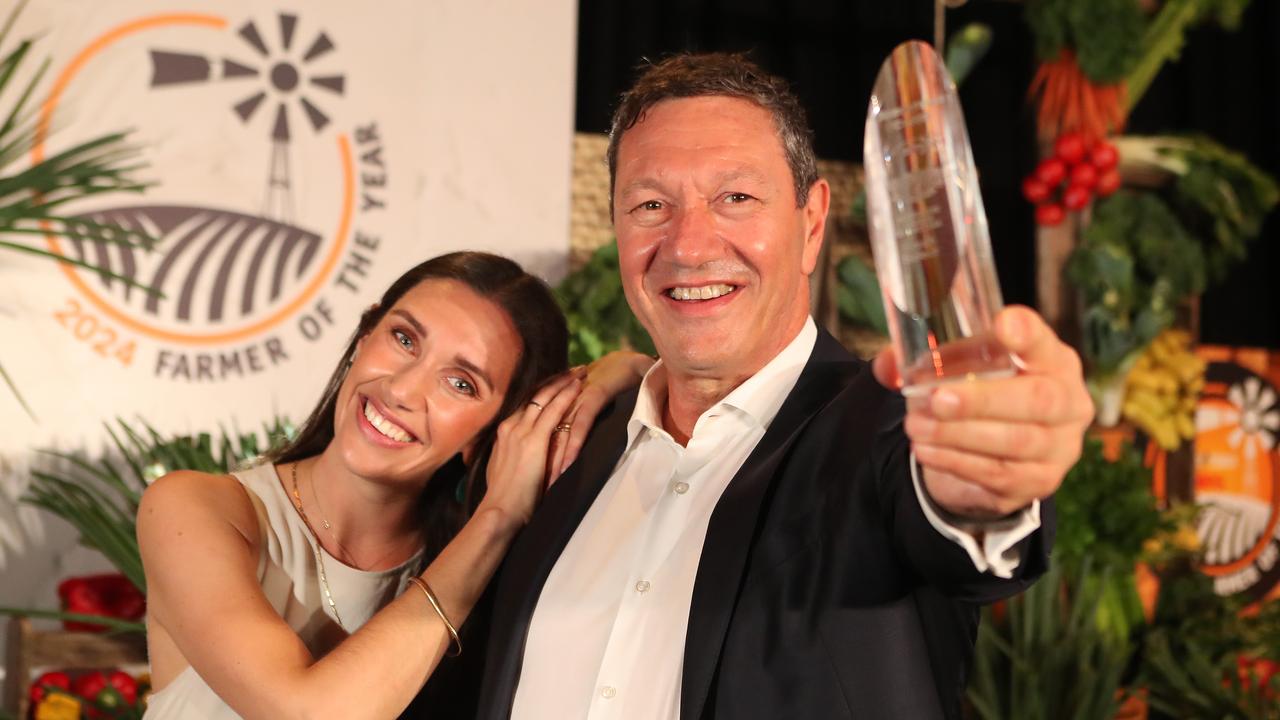A Golder opportunity
THE Golder family's Riverina property thrives on a mixture of sheep and crop growing.

THE Golder family's Riverina property thrives on a mixture of sheep and crop growing.
Chops and crops.
It's a simple yet effective recipe that continues to pay dividends for a switched-on farming family from the NSW Riverina.
Meet the Golders: father Graeme and sons Chris and Mark who together run 2400 breeding ewes and crop wheat, canola and oats on 2430ha near Temora.
The operation is centred on a home farm that has been in the family since 1957.
In the past 11 years they have almost doubled the size of their operation to run about 2100 Merino and 300 registered Border Leicester ewes alongside 1295ha of crops.
The family is perhaps best known for its sheep, both in the commercial world - its first-cross ewes and lambs are keenly sought by repeat clients - and through its Kegra Border Leicester stud, which sells up to 180 rams a year across southeast Australia.
In September, for the second year in a row, the Golders topped the annual Temora first-cross ewe market with their draft of 482 selling to a top of $199 and averaging $181.50.
Last year's draft topped at $167. In 2011, they achieved $250 compared to the market top of $270.
Graeme said this year's result was "a lot better than I thought it was going to be" given this year's Border Leicester ram sales which, "apart from a few red-hot ones in South Australia, have had quite poor clearances".
"It's a strange one," Graeme said.
"Next year or the year after there might be a bit of a shortage of first-cross ewes because of the number of Border Leicester rams that aren't being sold.
"Last autumn there was no premium for the first-cross ewe over their wether brothers, and that flowed right through until (this year)."
The Golders' property is in a 520mm rainfall zone, with about 330mm falling so far this year, mostly in May and June. Ewes are joined to Border Leicester rams from the Superborder group, which are ranked by Lambplan to have superior genes for lamb production.
Graeme selects for a structurally correct ram with "a good square carcass - not necessarily the biggest and the tallest" and a reasonable covering of medium wool.
"And they have to have good fertility and maternal characteristics of course," he said.
To produce the first-cross, the Golders source 350-400 Merino ewes each year from the Rollinson family's Goolgumbla stud at Jerilderie.
The ewes are purchased at 15 months each October. Last year they paid $180 a head delivered on farm.
"I like western-bred sheep because it is survival of the fittest. If they don't have good mothers out there they don't survive," Graeme said.
The ewes are joined in mid-December to Superborder rams. Two rams run with 100 ewes.
Ewes are pregnancy scanned for a six to seven-week lambing starting in mid-May.
Maiden ewes that don't get in lamb "get a second chance" but older ones "usually get a nick in their ear and sold after shearing with cast-for-age ewes".
Lambs are weaned at the end of August "so the ewes have a month to six weeks of green feed to regain their condition".
This year the ewes were trail-fed with grain through most of the lambing, which resulted in a weaning rate of about 117 per cent.
"Normally a third to almost half our wheat is Wedgetail for grazing. But we didn't get the early break this year so we never got it in," Graeme said. "Last year we weaned 130 per cent, which was unbelievable."
After harvest, wether lambs go on lick feeders in the paddock, the ewe lambs "do the rounds of the lucerne" and Merino ewes go on to cereal stubbles "with a bit extra".
The stud Border Leicester ewes produce 160-170 per cent of lambs run under commercial conditions.
The Golders' main shearing is in mid-October, with ewes averaging 6.5-7kg of 20 to 21-micron wool depending on the season. The pure Border Leicesters and "a few late lambs" are shorn in January.
Wool is sold through Moses and Son at Temora in late January or early February.
Graeme said the main shearing used to be in January and February when the ewes were in lamb but there were issues with lambing percentages.
"We brought our shearing earlier so the ewes were being joined with about six to eight weeks wool," Graeme said. "It made a hell of a difference. The lambing percentage jumped dramatically - as much as 25 per cent."
Wether lambs are finished on feeders until January-February when, depending on the season, they are sold at 26-30kg carcass weight.
"The drop before last there was not one consignment of lambs that went off the place that were under 30kg," Graeme said.
Half to two thirds of the young ewes are also sold in February. This year 760 ewe lambs sold for breeding at 56-58kg with no supplementary feeding to two repeat buyers on-farm.
Chris said wether lambs were sold to "whoever has the most money", adding they are members of the Swift Quality Assurance program and also sold to the Australian Lamb Company near Melbourne.
"Last year the ones that were too heavy for (Swift and ALC) we took to the Wagga saleyards and got more for them (there)," Chris said.
Their main run returned $135 but a price spike late in the season saw the tail- enders pick up $171.
"It's always the way - if you could hold them for another three months you're right," he said.
Graeme said their lambs last financial year averaged $135, compared to $187 in 2011-12 and $200.50 in 2010-11.
Ewes are retained until they are seven when they are sold as cast for age.
The Golders have been involved in performance recording their flock since 1984, when they joined the Sheep Meat Testing Authority, the forerunner to the current-day Lambplan.
Graeme said Kegra was one of the longest Border Leicester studs in Australia to continuously performance record sheep.
"We've been able to select for those hidden traits you can't see," Chris said.
The ideal ram had "good growth rate, good muscle with a slight positive for fat". "If you're thinking of breeding first-cross ewes, they need a bit of fat for the tight season."
While the Golders have sold up to 180 stud rams a year in the past, this year they had cleared only 90 to date.
The rams are generally sold at 13-14 months privately on-farm with the best fetching $800.
On the crops front, grazing wheat varieties are sown in early to mid-April with canola following around Anzac Day and the main-season wheat from the first week of May.
The Golders like to wait for the rain before sowing the crops.
A third to half of the wheat is grazed "as soon as we can get the sheep on" post lambing.
"Some years we've had 12 to 14 weeks off our grazing and still stripped half-handy crops," Chris said.
"Normally you don't get the yield penalty but this year there will be one because we just didn't get the rain after the sheep came out."
Chris said yield potential for this year's crops - windrowing of canola is expected to begin this week - was diminishing by day without rain.
Most canola was hit hard by late frosts last month with some paddocks 80-90 per cent affected.
The headers are expected in the paddock by the end of this month.
"We'll be laughing if we get our 3-3.5 tonnes /ha for our main season wheat," Chris said. Canola yields were shaping up about 1.7-1.8 tonne/ha.
All barley, oats and lupins are retained for the Golders' own use while they forward contract part of their crop.
As to the future, they said the split of sheep and crops was important.
"It's no good having all your eggs in one basket," Graeme said.


